Harnessing the power of nature-based solutions
How ‘climate solutions’ inspired by and driven by nature could play a key role in helping to build a more resilient and biodiverse future.
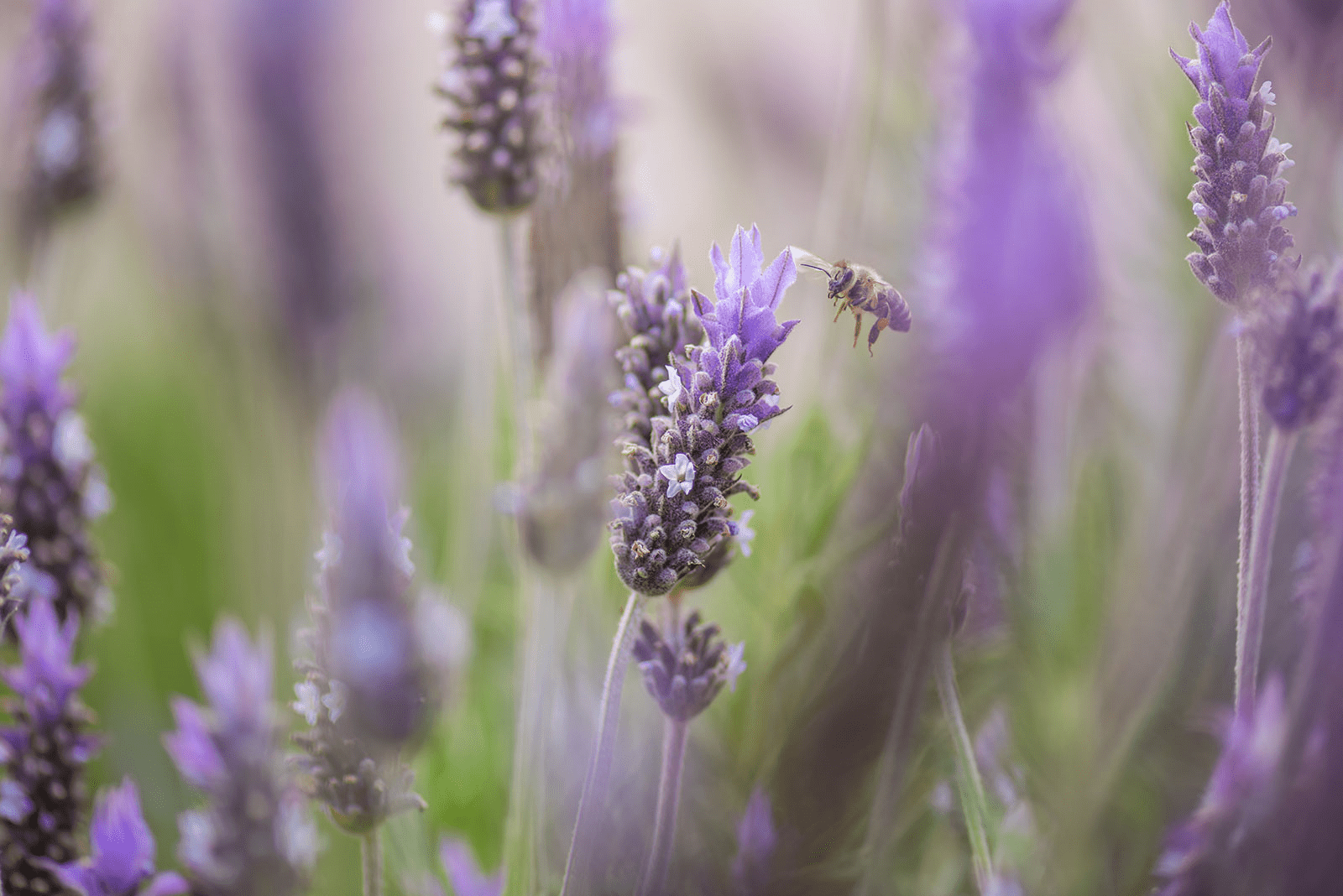
- Nature-based solutions have the potential to tackle climate change and other environmental challenges
- At Aramco, we are investing in nature-based solutions as part of our ambitions to enhance biodiversity and ecosystem services
- Our programs include the planting of mangroves and the protection of wetlands in Saudi Arabia, as well as the restoration of coral reefs in the Kingdom and overseas
Nature and human civilization are very tightly intertwined. From oceans to rainforests, grasslands to mangroves, natural ecosystems provide a range of ‘ecosystem services’ — the benefits that we humans get from nature — including food, clean water and air, pollination, and materials for medicine and shelter.
As the planet faces increasing environmental challenges, nature-based solutions — projects and programs that provide these ecosystem services — are gaining popularity as a means of addressing these challenges by working in harmony with nature.
What are nature-based solutions?
Nature-based solutions are defined by the United Nations Environment Programme (UNEP) as actions to protect, sustainably manage, or restore natural and modified ecosystems. These solutions help address societal challenges such as climate change, human health, food and water security, and disaster risk reduction effectively and adaptively, while also providing human well-being and biodiversity benefits.
Another key benefit of nature-based solutions is enhanced carbon sequestration: the capture and storage of greenhouse gases, which are the most significant driver of observed climate change since the mid-20th century. When natural ecosystems, such as oceans and forests, are kept healthy they not only absorb these greenhouse gases, they also ensure they remain ‘locked-away’ for the long-term. Other beneficial outcomes of nature-based solutions include reducing flood risk, and improving air and water quality.

Natural climate solutions, a subset of nature-based solutions, can help cool the planet by protecting existing ecosystems
There are already numerous examples of nature-based solutions in action around the world: projects planting trees to shield buildings from heat; the restoration of wetlands to sequester carbon and protect human lives, and economic assets, from flooding; the planting of mangroves to hold back storm surges in coastal regions; and agroforestry — a type of nature-based solution (and land-use management system) involving the cultivation and integration of trees and shrubs with crops and livestock in farming — to improve soil quality and provide enhanced access to firewood and sources of food.
Protect, transform, restore
A subset of nature-based solutions, natural climate solutions, are actions inspired by nature that are specifically used to mitigate climate change. These ‘solutions’ may help cool the planet in three ways:
The first
...is by protecting existing ecosystems; such as efforts to protect healthy forests by limiting deforestation. These include forest conservation projects that address the causes of tree clearing alongside local forest communities. These mature forests act as carbon sinks, absorbing vast amounts of CO2 from the atmosphere, and since CO2 is known to be the greenhouse gas primarily responsible for trapping heat and causing the Earth’s average temperature to rise, the forests’ role in reducing CO2 levels is critical to slow the rate of global warming.
The second
...method is the restoration and expansion of ecosystems; such as planting new mangrove forests or restoring damaged, degraded, or destroyed ones. Mangroves, which are known to be excellent carbon sequesters, extract CO2 from the air and store it in their roots and branches, as well as in the sediment that collects around them. Once they sequester this carbon, the coastal sediments of the mangroves can store the captured carbon for thousands of years if the mangrove forests are left undisturbed.
The third
...method of using natural climate solutions to address climate change is through sustainable land management (SLM). The United Nations defines SLM as ‘the use of land resources for the production of goods to meet changing human needs, while at the same time ensuring the long-term productive potential of these resources and the maintenance of their environmental functions’. Its tactics include controlling soil erosion, managing and enhancing soil fertility, improving the ability of agricultural land to retain water, and increasing levels of organic matter and biodiversity in soil to help capture carbon.
Working together with nature
At Aramco, we are making sustained investments in projects focused on nature-based solutions. These projects aim to help improve natural habitats and protect shared resources, in line with our ambition to enhance biodiversity and ecosystem services.
One of the nature-based solutions we are pursuing is the planting, and restoration of mangrove forests in Saudi Arabia.
Not only have mangrove forests been shown to be excellent carbon sequesters, but their intricate yet robust mesh of mangrove roots form complex structures both above and beneath the surface of the water they grow in, providing life-sustaining, sheltered habitats for other plants, as well as birds and marine life.
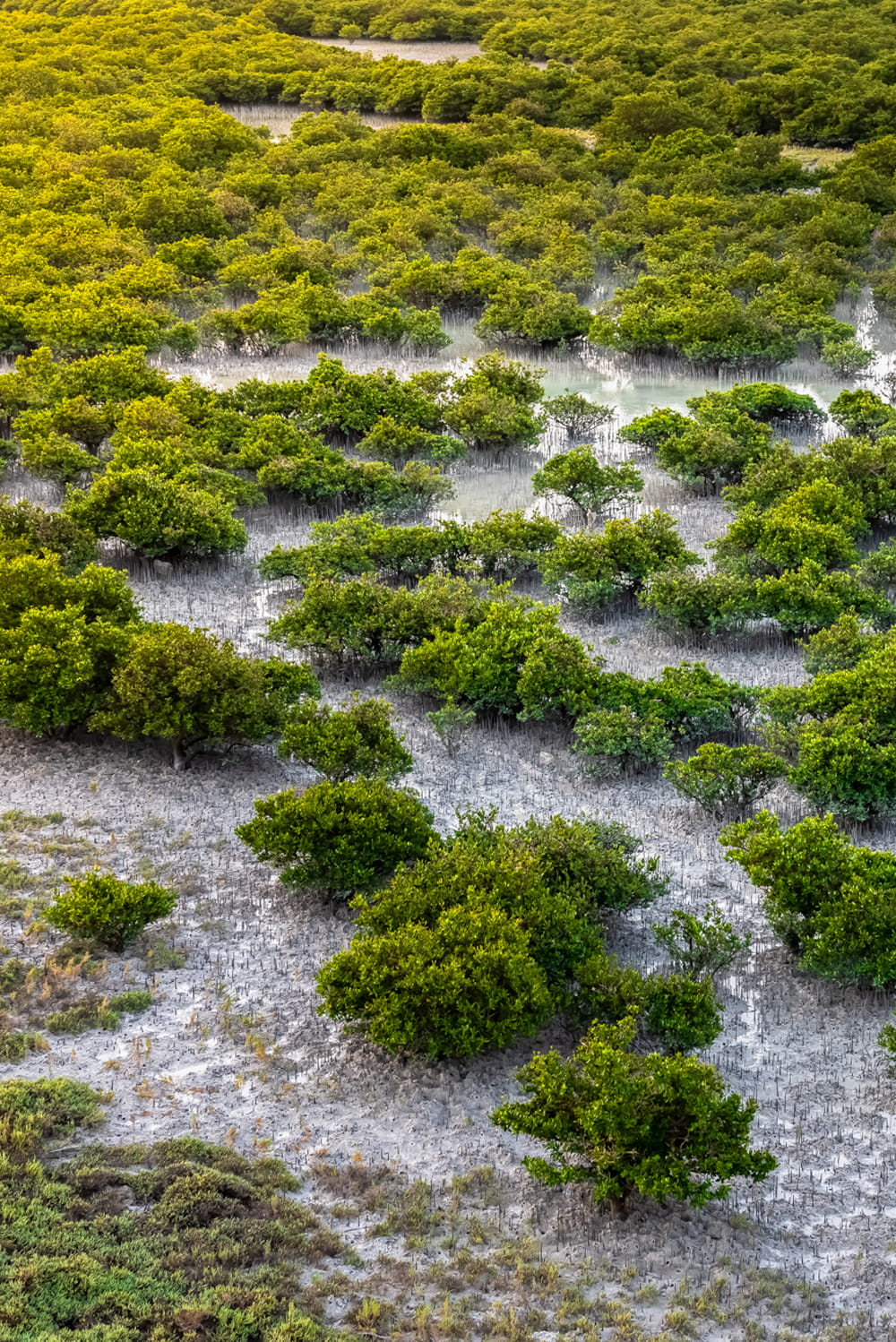
Mangrove forests sequester carbon while providing habitats for other plants, birds, and marine life
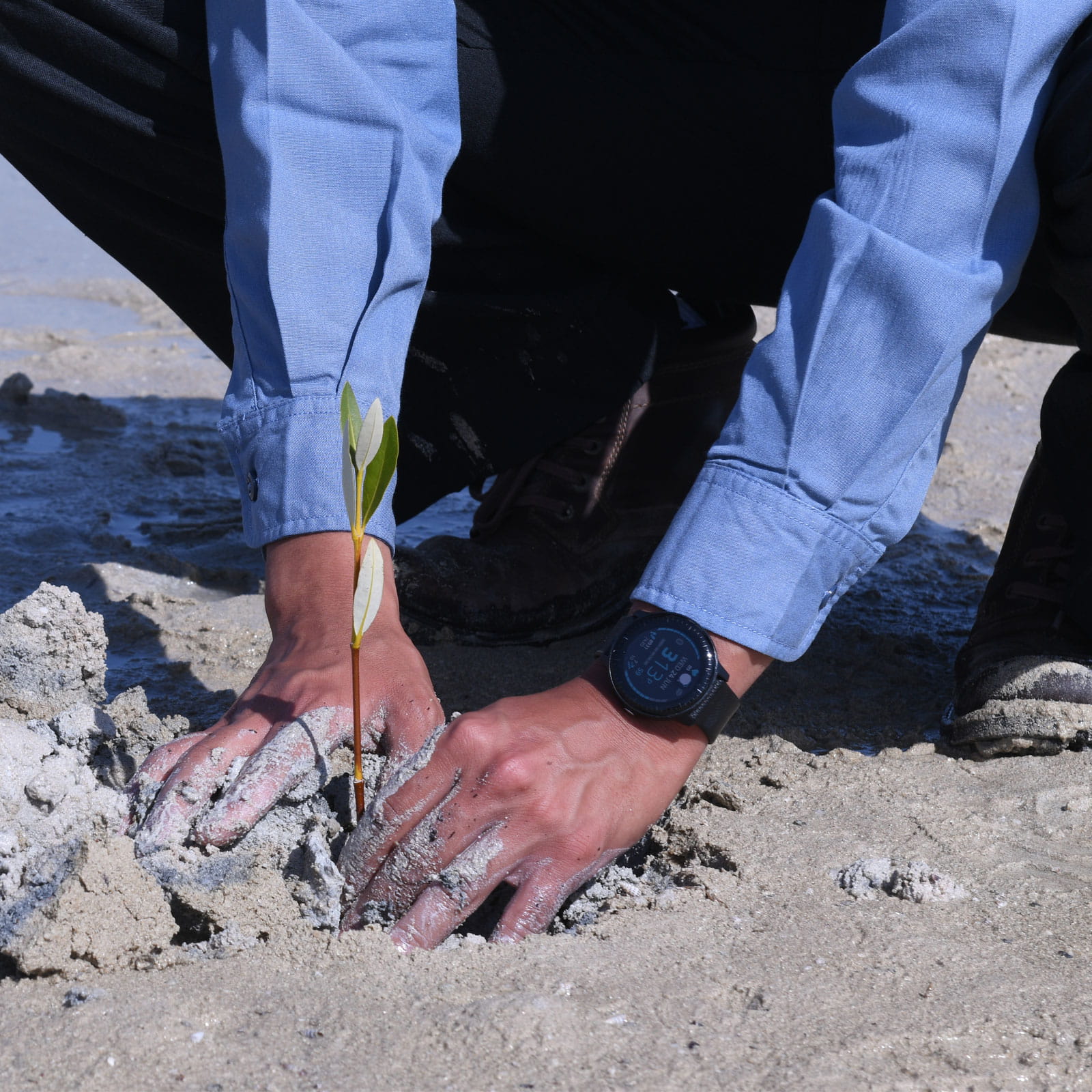
We have planted 30 million mangroves as of 2023
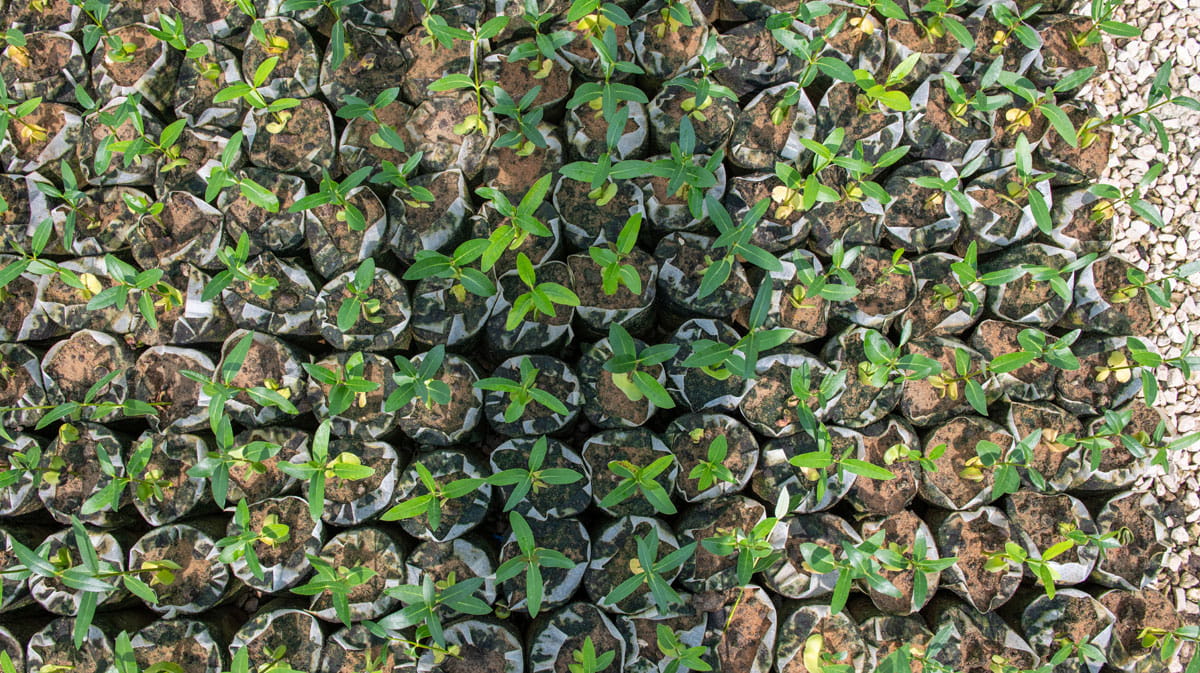
Aramco has been planting mangrove seedlings since 1993
In 1993, Aramco began planting its first mangrove seedlings in Saudi Arabia, along the Kingdom’s Eastern Province coastline, in an effort to help reverse the degradation of the Kingdom’s native forests along the shores of the Arabian Gulf.
Starting in 2020, we began ramping-up our mangrove planting as part of our greenhouse gas emissions mitigation program, planting 2 million mangroves in that year alone. As of 2023 end, we planted a total over 30 million mangroves, with a target to plant 300 million mangroves in the Kingdom by 2035.
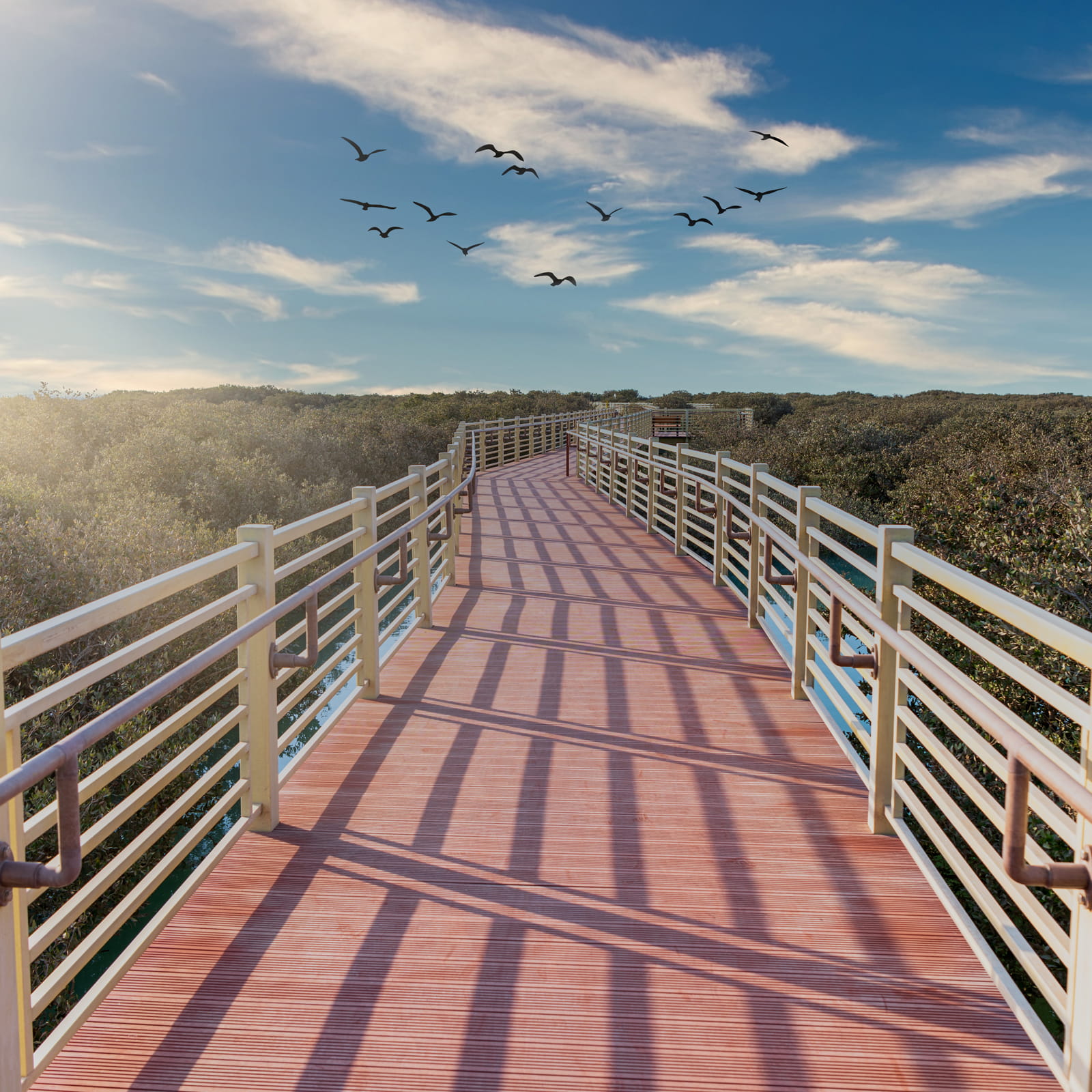
The Rahima Bay Mangrove Eco-Park offers visitors an opportunity to learn about mangrove forests
Protecting wetlands and marine ecosystems
Aside from planting and restoring mangroves, our investments in nature-based solutions also include projects that could help the restoration and protection of natural wetlands in the Kingdom. These wetlands provide a habitat for many plant and animal species, and protecting them may also help provide nearby communities with improved resilience against the effects of natural hazards such as floods, droughts, or storm damage, while also providing residents with improved access to fresh water and food sources.
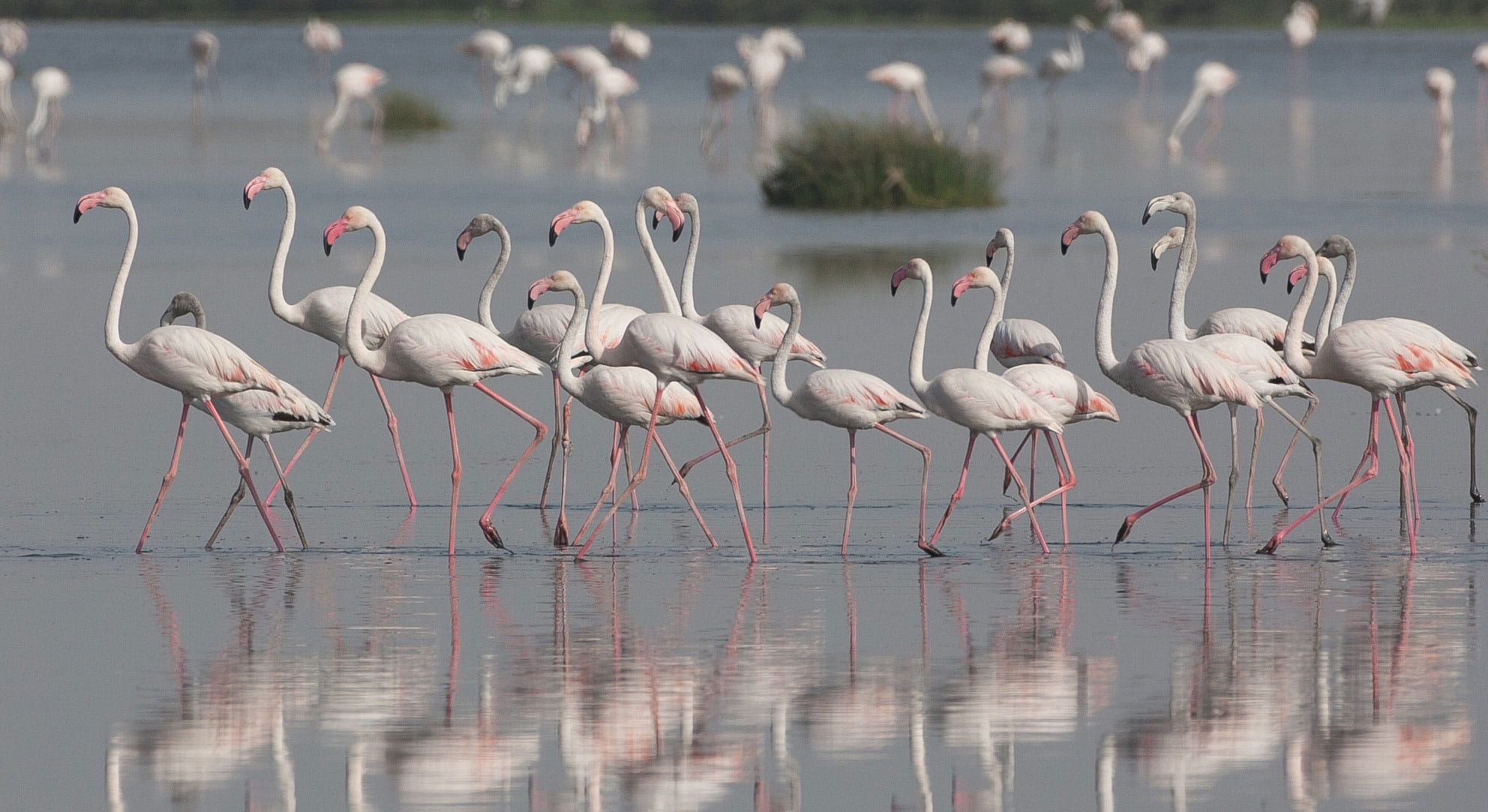
We restored the Abqaiq wetlands, providing a secure habitat for many migratory and wetland bird species
In 2016, we began restoring the Abqaiq wetlands, which are located near our Abqaiq Plants facility in Saudi Arabia’s Eastern Province. These natural wetlands — which had been used by locals as a dumping site for unregulated solid waste — were cleaned-up and restored with the Company’s support. We designated these wetlands as one of our BPAs and fenced the site to help prevent further illegal dumping, providing a secure habitat for native wildlife, including many migratory and wetland bird species such as Western Marsh Harrier, Caspian Tern, and Spotted Crake. In 2018, we also planted 25,000 native trees at the site which, as they continue to mature, provide additional habitat for these visiting birds, as well as other native species.
Another nature-based solution that we are investing in are coral reefs, which act as net sinks of atmospheric carbon when healthy. They are also known to support marine life, provide shoreline protection to coastal communities, and supply food and economic security for an estimated billion people, globally.
Our work to support the protection and restoration of coral reefs is international in scope and done in partnership with local research institutions. In Japan, we have been working with the Okinawa Coral Reef Conservation Consortium since 2011 to help conserve the coral reefs in Okinawa through marine environment studies, research, and educational programs. In Singapore, we partnered with the National Parks Board (NParks) in 2021 for the trial application of a technology to stimulate the growth of hard corals by subjecting them to low-voltage electricity.
Since 2020, we have also been supporting efforts aimed at rescuing and rebuilding coral reefs in the coastal waters of the United States and its territories through a grant-making partnership with the National Fish and Wildlife Foundation (NFWF). Funding from the Aramco partnership is administered through the Coral Reef Stewardship Fund (CRSF), the Foundation’s flagship grant program for coral reefs. Our investments in coral conservation include actions that aim to reduce threats faced by important seed reefs; promote active coral restoration of an estimated 1,000 acres of damaged or degraded reefs; and encourage efficient project management through applied coral science, testing and refinement of best management practices, documentation of case studies, and dissemination of information to benefit the coral conservation and management communities beyond the priority reefs where we work.
In September 2024, we funded the efforts to improve the health and resilience of additional coral reefs in Florida, as well as ones around Hawai'i, Puerto Rico, American Samoa, and the U.S. Virgin Islands.
We are also deploying artificial reefs in the Arabian Gulf and Red Sea. Beginning in 2019 we designed, extensively tested, and manufactured custom artificial reef blocks — man-made, long-lasting solid structures made of marine concrete — which have (as of late 2024) been deployed at 41 sites. In collaboration with King Faisal University, we are closely monitoring these artificial reefs to obtain data on their efficacy in enhancing marine biodiversity.
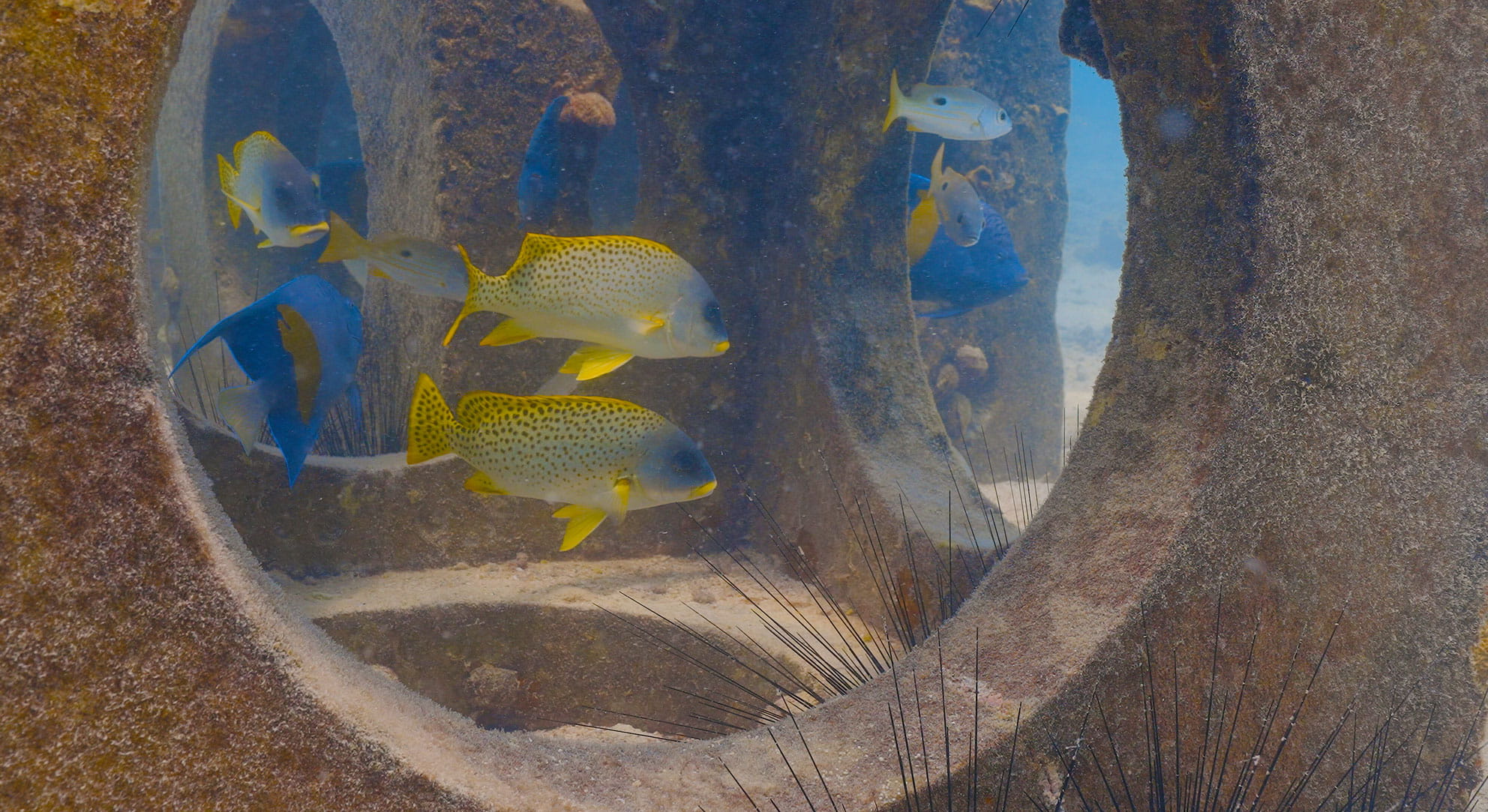
We are supporting the protection and restoration of coral reefs in Japan and the U.S.
Understanding the climate impact of nature-based solutions
The concept of nature-based solutions first emerged in the late 2000s, introduced by the World Bank and championed by the International Union for Conservation of Nature (IUCN), among others, to help embed biodiversity considerations in climate change adaptation and mitigation strategies. Since then, the concept has gained popularity among practitioners and policymakers. Now, close to two decades later, there are numerous success stories from around the globe that demonstrate how nature-based solutions are already helping mitigate some of the impacts of climate change.
In Mozambique, for example, the Ministry of Land, Environment and Rural Development maintains a mangrove nursery, plants seedlings, and monitors the state of reforested areas. The reforested areas have been found to provide improved flood protection, reduce salt intrusion on agricultural land, and have brought back previously diminished wildlife species. And in the Gulf of Mexico, and the waters around Bangladesh, artificial reefs have stabilized coastal sediment and allowed salt marshes to expand.
Some case studies also show that nature-based solutions, true to their definition, are bringing a range of co-benefits, such as socio-environmental and economic advantages. In Nepal, for example, where food insecurity is a pervasive problem, agroforestry has increased the household income of some Nepalese communities, helping them secure additional food supplies, reducing food insecurity in the region. Similarly, in Indonesia, a mangrove restoration program in the city of Demak has resulted in the recovery of fish stocks, leading to a fivefold increase in aquaculture productivity, and has helped triple the income of some local farmers.
Protecting ecosystems — now and in the future
‘Healing nature with nature’ has immense potential as a means of addressing the threat of climate change. Research carried out in 2017 by global environmental non-profit, The Nature Conservancy, has estimated that nature-based solutions can potentially provide up to 37% of the emissions reductions required before 2030 in order to achieve the targets of the Paris Agreement. While the potential of nature-based solutions is vast, and progress is being made, fully-realizing it will require integrating these solutions into broader climate and development policies, scaling up investment, and involving local communities in their planning and implementation. While much of this will depend on governments and international organizations operating on a global and national level, businesses, acting as good global citizens, can also play their part. This is why Aramco is dedicated to ensuring the long-term success of our existing nature-based solution projects, as well as always looking for new opportunities to contribute to wider efforts — through sharing research or providing funding.
Successful implementation of these projects, and the hundreds of others now underway across the globe, can help achieve a healthier and more resilient planet for generations to come.
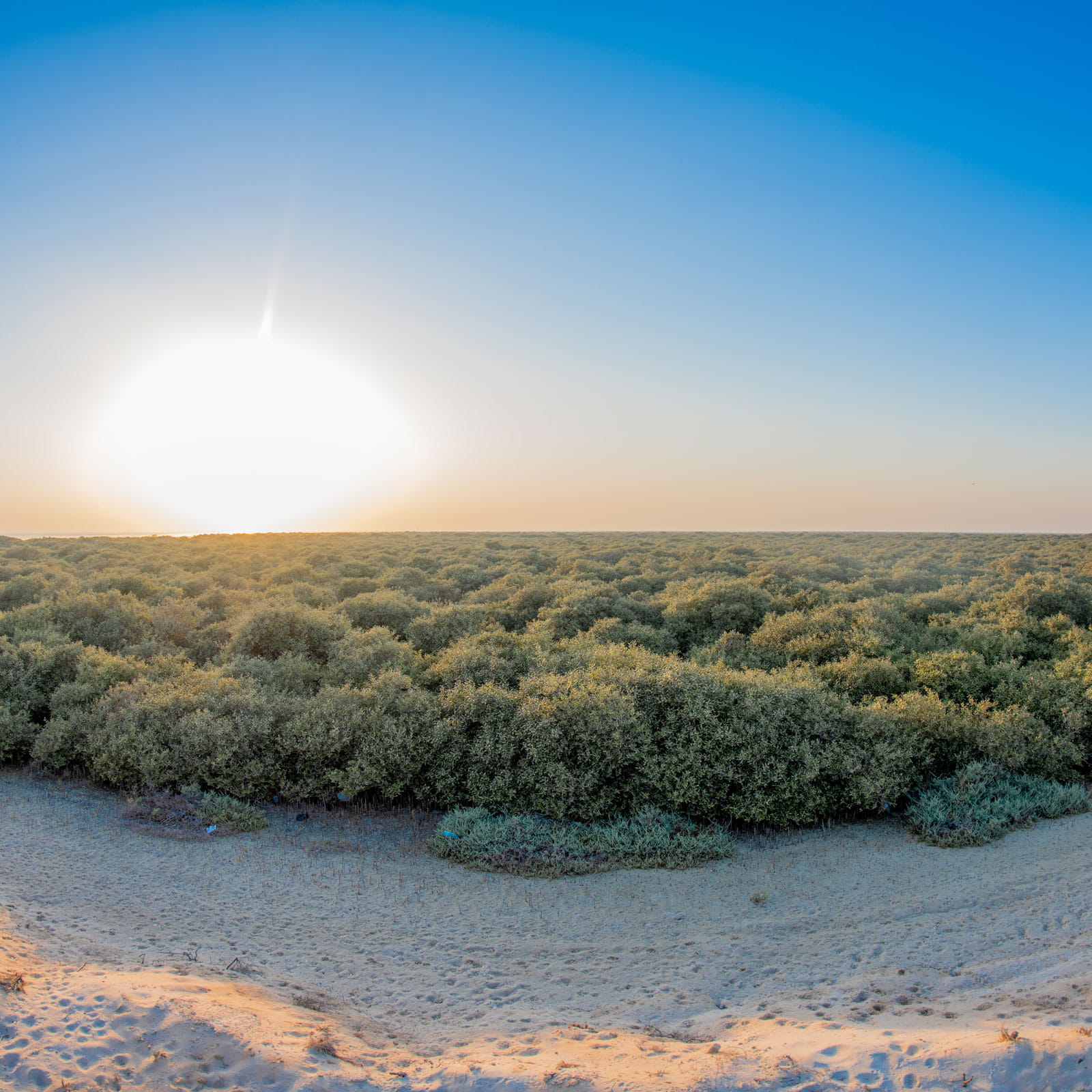
Are nature-based solutions cost-effective?
shows that nature-based solutions (NbS) are a cost-effective approach to mitigating risks from a range of disasters — from floods and hurricanes to heatwaves and landslides — which are only expected to intensify as Earth continues to warm. The 2024 paper, which looked at English-language peer-reviewed studies published between 2000 and 2021, concluded that 71% of these studies indicated that NbS have consistently proven to be a cost-effective approach to mitigating hazards, and that a further 24% of studies found NbS to be cost-effective under certain conditions.
More from Elements
The material in this article is intended to be for general informational purposes only, and readers should not place undue reliance on the statements or opinions therein. Any information provided speaks only as of the date this content was published and Saudi Aramco undertakes no obligation to correct, update, or revise any statements or opinions made in or implied by this article.



